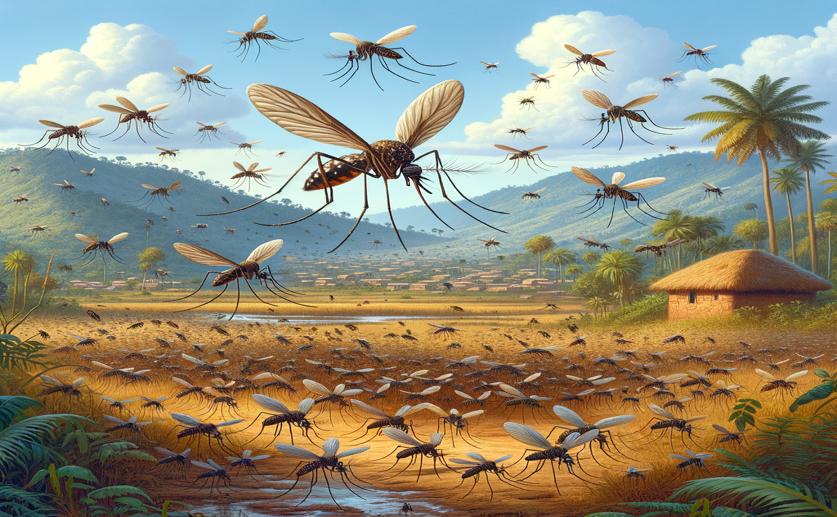
Behavior of African Malaria Mosquito Swarms in Uganda
Jim Crocker
23rd March, 2024

Image Source: Natural Science News, 2024
Key Findings
- In Uganda, An. gambiae mosquitoes form larger swarms during the wet season
- These mosquitoes prefer to swarm over bare ground and can be found at heights up to 3.13 meters
- The study found mixed-species swarms with both An. gambiae and Culex mosquitoes, a new observation for Uganda
References
Main Study
1) Attributes of Anopheles gambiae swarms in South Central Uganda.
Published 21st March, 2024
https://doi.org/10.1186/s13071-024-06132-9
Related Studies
2) Swarms of the malaria vector Anopheles funestus in Tanzania.
3) Impact of seasonality and malaria control interventions on Anopheles density and species composition from three areas of Uganda with differing malaria endemicity.
4) Eave and swarm collections prove effective for biased captures of male Anopheles gambiae mosquitoes in Uganda.
5) Abundance and Distribution of Malaria Vectors in Various Aquatic Habitats and Land Use Types in Kakamega County, Highlands of Western Kenya.



 4th March, 2024 | Jim Crocker
4th March, 2024 | Jim Crocker